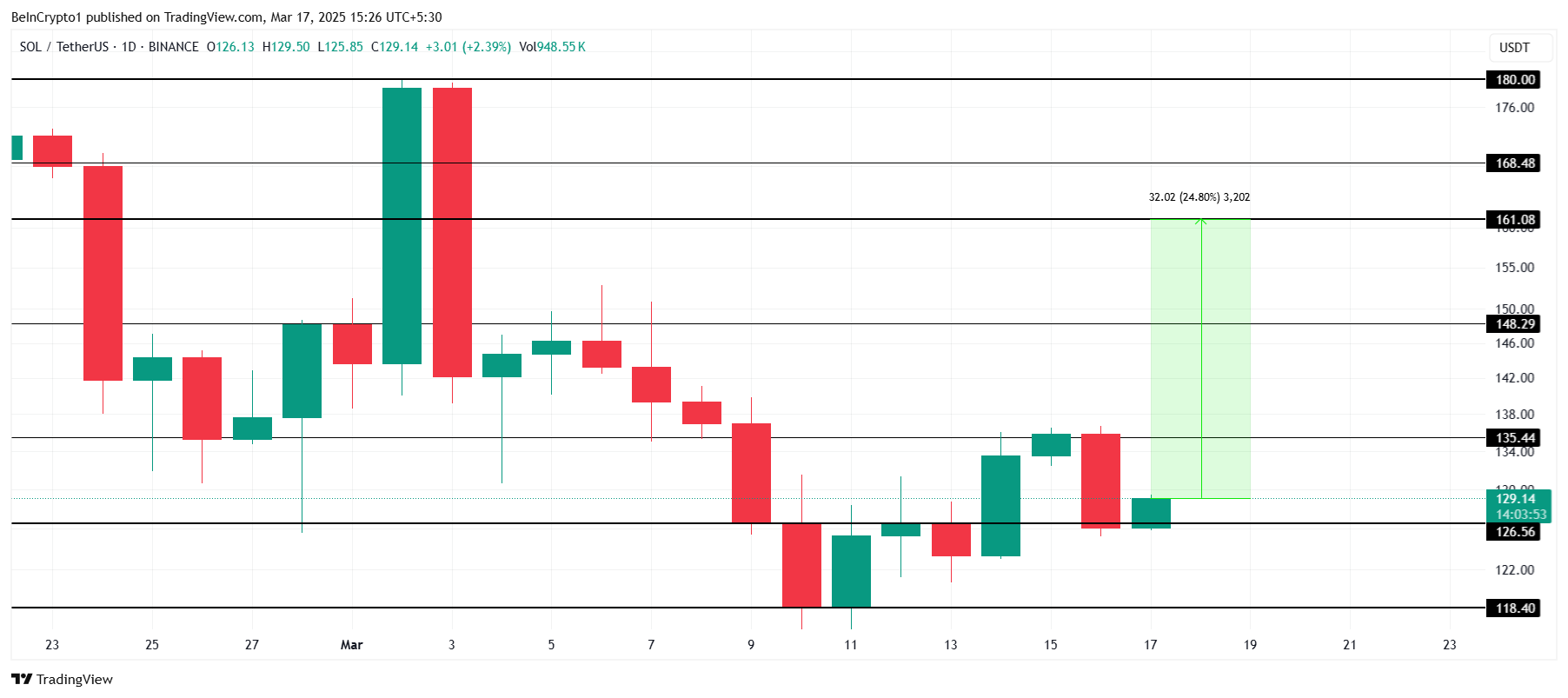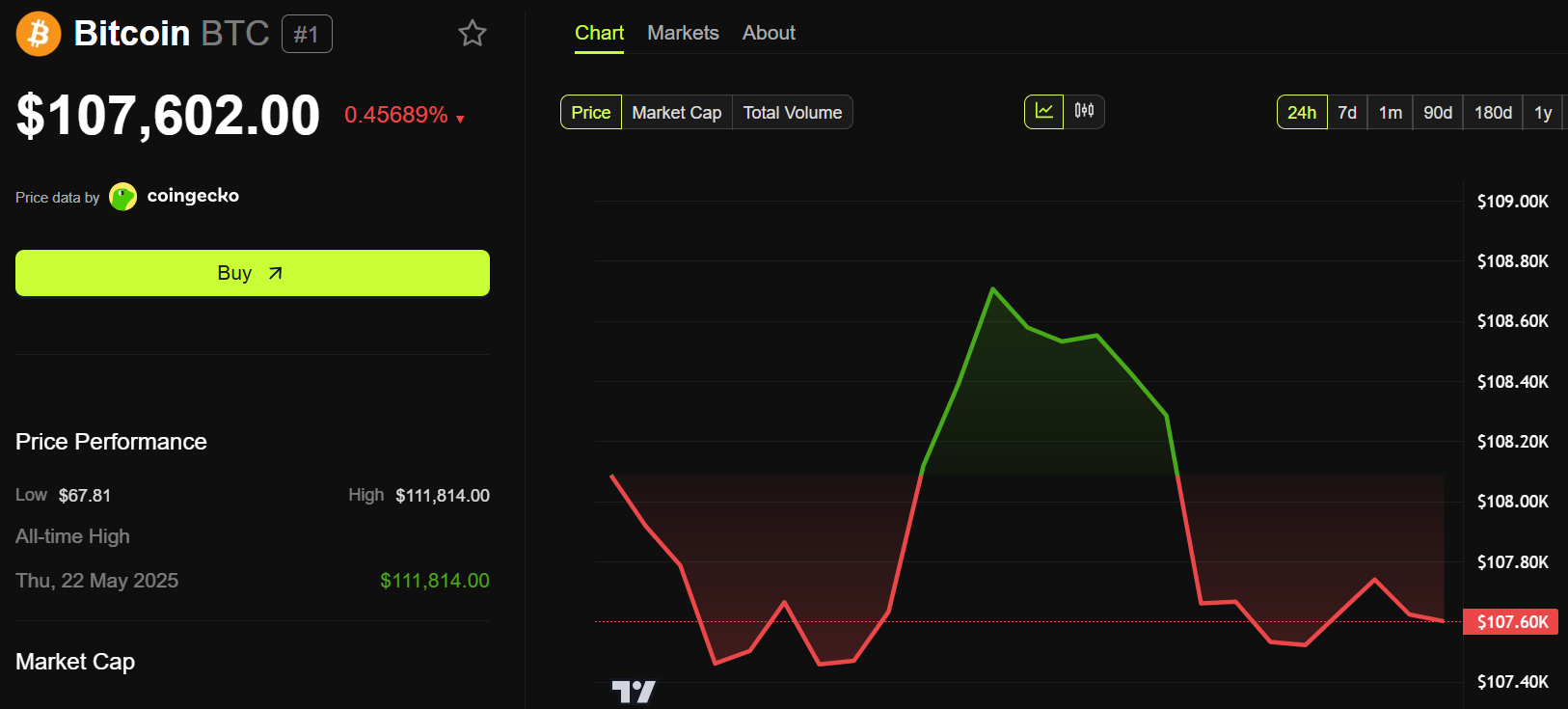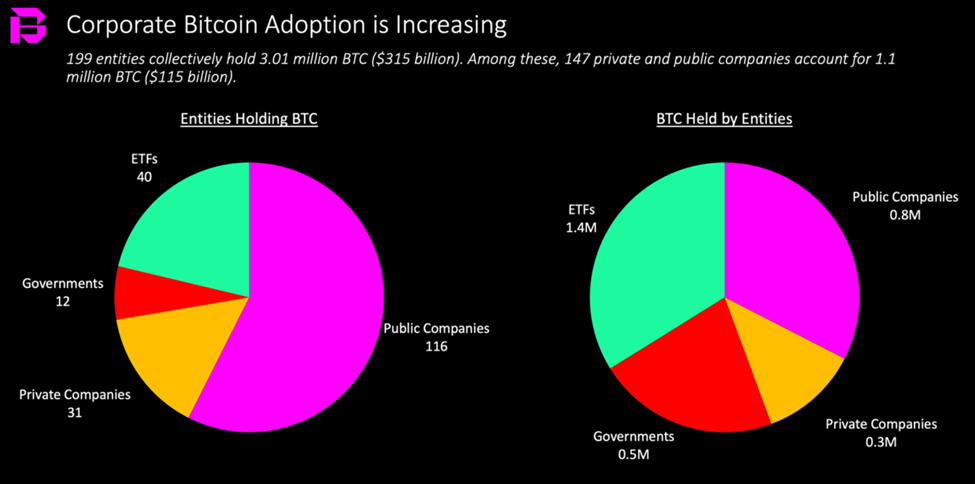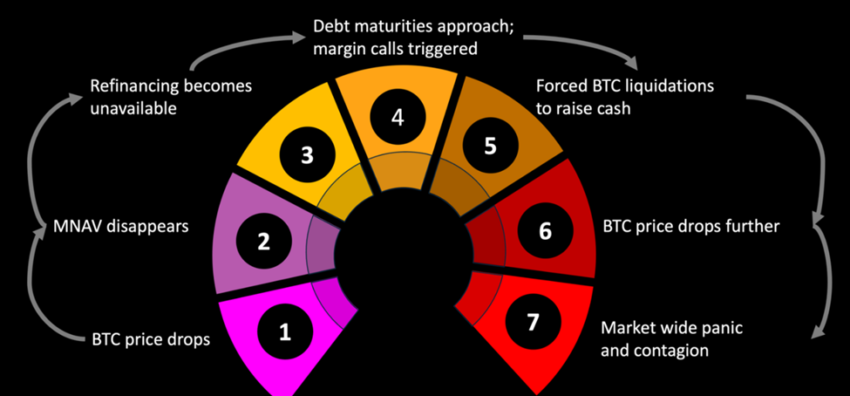The crypto market’s volatility has left altcoins in limbo, uncertain about potential gains or losses, and heavily reliant on external factors. These influences could determine whether a recovery rally occurs.
BeInCrypto has analyzed three key altcoins for investors to watch in the third week of March and what direction they could take.
Solana (SOL)
Solana’s price is currently at $129, positioning itself for a potential bullish breakout. On March 17, the Chicago Mercantile Exchange (CME) will launch SOL Futures, a significant event for the altcoin. As CME is one of the largest derivatives exchanges globally, this could drive substantial institutional inflows into Solana.
This development could inject bullish momentum into SOL, pushing the altcoin higher. The critical resistance level to watch is $161, which would require a 24% price surge. However, for this rally to materialize, SOL must first breach the $135 and $148 resistance levels, paving the way for continued gains.

If Solana fails to break through either $135 or $148, its price could retrace. A drop below these levels could send SOL back to $126 or lower to $118. This scenario would invalidate the bullish outlook, delaying any potential recovery and exposing the altcoin to further downside risk.
Mantle (MNT)
MNT price has surged 25% over the past week as anticipation builds for Mantle’s upcoming network upgrade. On March 19, the Mantle Network Mainnet will undergo a hard fork upgrade, activating EigenDA and ensuring compatibility with Ethereum’s future Pectra upgrade. This event is driving strong bullish sentiment for MNT.
In response to the upgrade, MNT is expected to see further gains, potentially reaching $1.00. Currently trading at $0.83, the altcoin needs to breach the $0.87 and $0.94 resistance levels to sustain its rally. A successful breakout above these levels could confirm the bullish trend.

However, failure to surpass $0.87 could keep MNT stuck in consolidation. If the altcoin loses support at $0.79, it risks falling further to $0.71. A drop to this level would invalidate the bullish outlook and shift market sentiment toward a bearish trend.
BNB
Another altcoin to watch in March, BNB’s price surged 19.5% this week, reaching $635 at the time of writing. The altcoin successfully broke through the key resistance block between $587 and $619. With bullish momentum building, BNB appears poised for further gains, provided market conditions remain favorable in the coming days.
One major catalyst is the upcoming Pascal hard fork on March 20. The upgrade will introduce EIP-7702 smart contract wallets, enhanced Ethereum Virtual Machine (EVM) compatibility, and improved developer flexibility. These enhancements could drive investor confidence, pushing BNB above $647 and potentially toward the $686 mark.

However, if the anticipated rally fails to gain traction, BNB could retreat to $619. Losing this support level may trigger further declines, sending the altcoin back through the resistance block and potentially testing the $550 support level, which would invalidate the bullish outlook.
The post 3 Altcoins to Watch in the Third Week of March 2025 appeared first on BeInCrypto.







